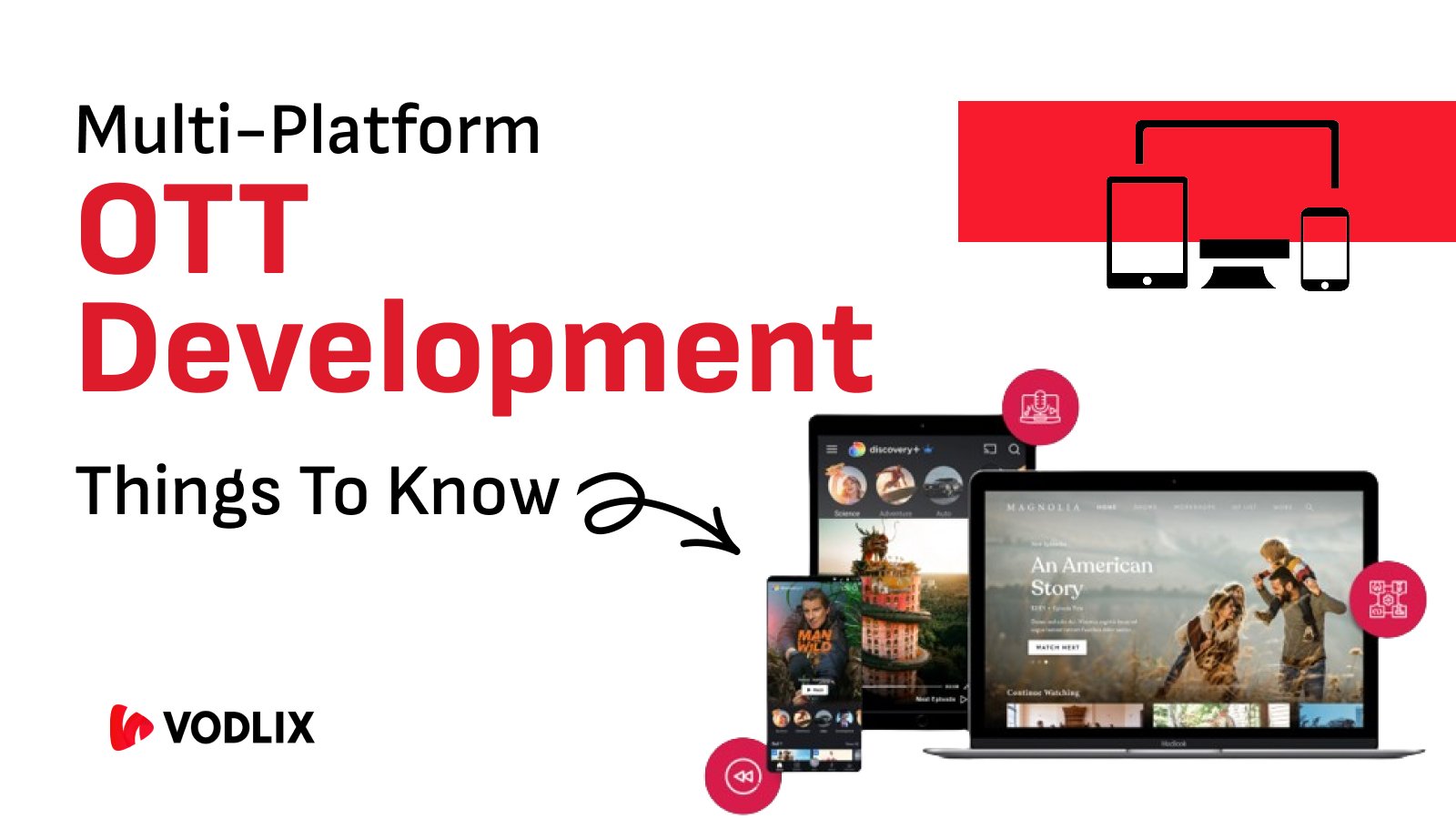The importance of multi-platform OTT (Over-The-Top) development is increasingly recognized by businesses eager to capitalize on the on-demand content market. The widespread adoption of connected devices like smartphones, smart TVs, and tablets has ushered in a new era of content consumption, where users expect seamless access to streaming services across all their devices. This shift demands that companies in the streaming sector adopt a multi-platform strategy not just to enhance user engagement and satisfaction but to stay competitive and relevant.
Understanding Multi-Platform OTT Development
Multi-platform OTT development involves creating streaming services that are accessible on various devices and platforms, ensuring a consistent and high-quality user experience. This approach caters to the modern viewer's demand for flexibility, allowing them to access their favorite content on the device of their choice, anytime and anywhere.
Key Components of Multi-Platform OTT Development
Content Adaptation
Essential for a seamless viewing experience, content must be optimized for various screen sizes, resolutions, and aspect ratios. This requires responsive design techniques, adaptive streaming, and intelligent transcoding to maintain visual and audio quality across devices.
Maintenance and Updates
The complexity of supporting multiple platforms necessitates a streamlined approach to app maintenance and updates. Regular deployment of enhancements and security patches across all platforms is crucial, often requiring coordination with different digital storefronts and compliance with their guidelines.
Testing and Quality Assurance
Ensuring a consistent and reliable user experience across diverse devices involves extensive testing. This includes evaluating the app's functionality, compatibility, and performance on various operating systems, screen sizes, and hardware specifications.
Technological Foundations
Technologies like Adaptive Bitrate Streaming (ABS) and cloud-based infrastructure are pivotal. ABS optimizes video delivery based on the user's network conditions, while cloud platforms provide the scalability needed to manage and deliver vast amounts of video content efficiently.
Multi-Platform Compatibility
A critical aspect of OTT services, ensuring content is universally accessible, enhances user engagement by catering to varied device preferences and usage scenarios.
Strategies for Effective Multi-Platform OTT Development
Responsive Design
Employing responsive web design principles to ensure the OTT application adapts seamlessly to different devices, enhancing user interface consistency and user experience.
Cross-Platform Frameworks
Utilizing development frameworks like React Native or Flutter enables the creation of applications from a single codebase that can be deployed across multiple platforms, improving development efficiency and reducing time to market.
Modular Architecture
Adopting a modular architectural approach facilitates the reuse of code and components, streamlining the development process and making the application more manageable and adaptable to future changes.
API-Driven Development
Leveraging well-documented APIs for core functionalities such as content delivery, user authentication, and monetization can simplify integration with various platforms and enhance the scalability and flexibility of the OTT service.
Incorporating User Feedback
Actively seeking and incorporating user feedback into the development cycle is essential for continually refining the application and addressing any platform-specific challenges or user requirements.
Enhancing the User Experience in Multi-Platform OTT Services
To differentiate their offerings in a crowded market, OTT providers must focus on enhancing the user experience with features like content personalization, offline viewing capabilities, seamless cross-platform compatibility, social media integration for community building and content sharing, support for multiple languages to cater to a global audience, and sophisticated search and filtering options to improve content discoverability.
Wrapping Up
In conclusion, the landscape of multi-platform OTT development is complex but rich with opportunities. By embracing the strategies outlined above and focusing on a user-centric approach, businesses can develop OTT services that not only meet the diverse needs of modern consumers but also drive engagement, retention, and revenue growth in the digital streaming arena.
In the ever-competitive world of digital streaming, multi-platform OTT development is not just an option; it's a necessity. As you embark on this journey, consider partnering with Vodlix, a leader in OTT platform solutions. Vodlix offers end-to-end services, from strategic planning to deployment, ensuring your platform is not only versatile across devices but also tailored to meet the unique needs of your audience. With Vodlix, you can leverage cutting-edge technology, expert insights, and a user-centric approach to redefine the streaming experience. Discover how Vodlix can empower your OTT platform to thrive in a multi-platform world.



.png)


